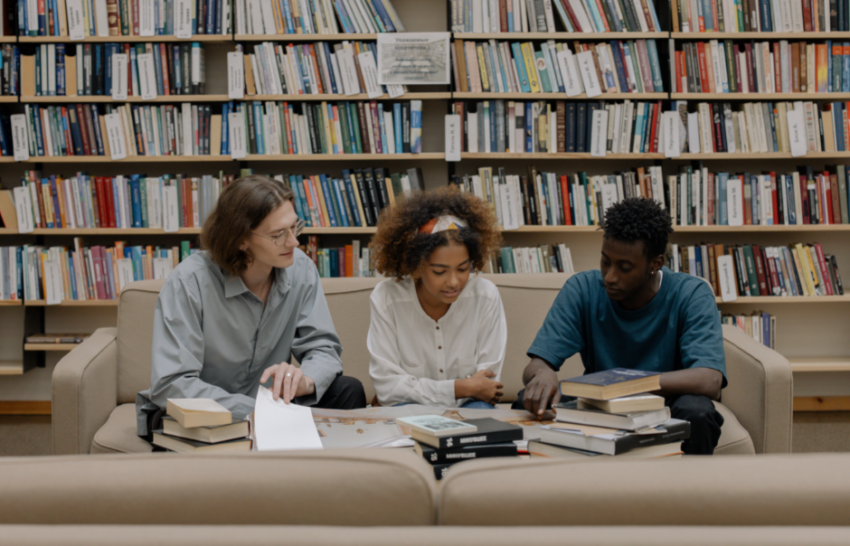Covid educational inequalities will impact HE inequalities for years to come

Prior attainment is the most important predictor of entering higher education (HE). When we take into account GCSE attainment, the gap in higher education participation between the richest and poorest students becomes vanishingly small [1]. The Office for Students (OfS) has given the HE sector a strong steer to do more to narrow this gap, but new evidence published last week suggests that, in the aftermath of the Coronavirus pandemic, this task may be harder than ever.
The long shadow of Coronavirus
One of the concerns about the pandemic was that it would worsen existing inequalities, in terms of health, employment and education. The first wave of the COSMO cohort study can now help us understand how far the pandemic affected those who are already most disadvantaged in terms of education, and suggests even more effort will be needed to support them.
Led by UCL Centre for Education Policy & Equalising Opportunities (CEPEO), the Sutton Trust and the UCL Centre for Longitudinal Studies, the study is following a representative sample of over 13,000 young people across England who were in Year 11 in 2021. The first wave of data from this study helps us get under the skin of how the impact of the pandemic differs for different groups of students, and it makes for grim reading.
First up we have the actual experience of the pandemic. There were big differences in how state and private schools were able to respond to the unprecedented challenges of remote learning. 96% of independent school pupils had live online lessons in the first lockdown, compared to 65% of state school pupils. When state schools caught up in the second lockdown, Grammar schools and those with more affluent intakes fared better than schools with more deprived students.
Even when remote learning plans were in place, students from lower socioeconomic backgrounds were less likely to be able to access a suitable device, quiet learning spaces and support from teachers or parents. Young people report feeling they have fallen behind due to the pandemic, and perhaps unsurprisingly this finding is also patterned by school type – 37% of those at state schools said they had fallen behind their classmates – more than double the figure for independent school students.
COSMO also asks young people about their plans for the future. Many students say they have changed their education and career plans, and this is particularly true for females, young people from disadvantaged family backgrounds, and those attending state comprehensive schools. Compared with pre-pandemic data, the students were less positive about higher education. The cohort have large disparities in aspirations to attend higher education with disadvantaged young people less likely to be planning to apply to university, and less confident about getting in.
These disparities are not new, but COSMO shines light on the fact that disadvantaged students were less likely to receive information, advice and guidance (IAG) during the pandemic. Careers IAG is likely to be especially important for these students who are less likely to be able to access such information via their social network. So the pandemic will have been disproportionately harmful for these students in terms of learning about future pathways.
These outcomes are concerning enough in the short term. They will also have medium- to longer-term impacts, especially on higher education – both directly, via changing life-plans, and indirectly via attainment. HE providers will need to support these students on both fronts to avoid a widening of the gap in entry between the richest and poorest.
The path you choose (or have chosen for you)
We receive these new findings as the OfS consult on regulating equality of opportunity in English higher education. Under their proposals, HE providers will take a new approach to developing access and participation plans (APPs), identifying the biggest ‘risks to equality of opportunity’ in their context and developing targets to match.
The OfS say that ‘risks to equality of opportunity occur when an individual, because of circumstances that the individual did not choose, may have their choices about the nature and direction of their life reduced by the actions or inactions of another individual, organisation or system’.
As well as individual-level risks the consultation explicitly mentions bigger forces which have the power to throw huge swathes of students off course – for example, the prosperity of the region in which you grow up and the cost of living crisis. The results of the COSMO study show that the Coronavirus pandemic is still very much a risk which must also appear in these plans, as we grapple with the indelible mark it has left on the attainment and life plans of students.
To paraphrase the OfS, these students were thrown into a situation they did not choose, and had choices about the nature and direction of their life reduced as a result. Crucially, the set of choices which were available to students differed by background and by the type of school they attended. A student could not choose to attend live online lessons which were not offered. They could not choose to study in a quiet place which did not exist in their home. They could not choose to attend an IAG session which was not run at their school. The Coronavirus pandemic must loom large as a risk in APPs for years to come if we are to correct the cumulative effect of these smaller risks and give all students the chance to fulfil their potential, and have a full unimpeded and fair choice ahead of them when it comes to going into higher education.
[1] Crawford, C., Gregg, P., Macmillan, L., Vignoles, A. & Wyness, G. (2016) Higher education, career opportunities, and intergenerational inequality. Oxford Review of Economic Policy. 32(4), pp.553-575.
